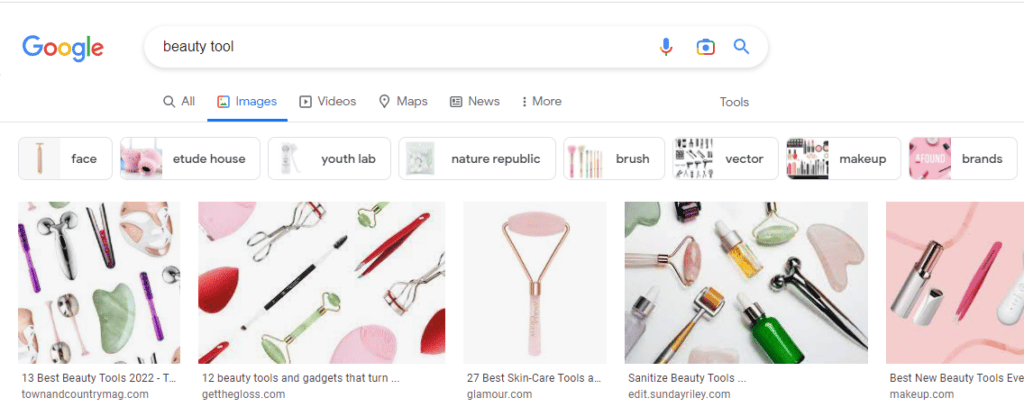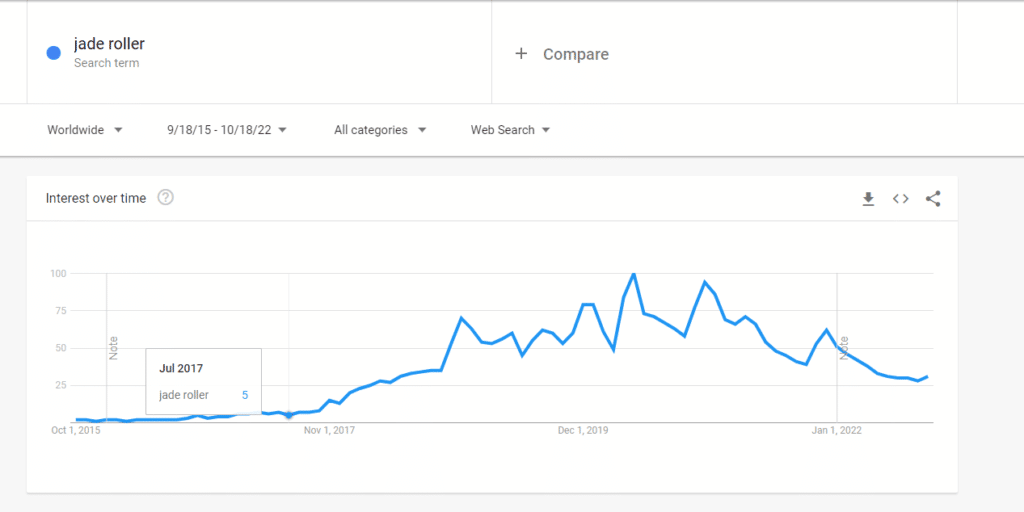
You’ve no doubt heard the mantra “Do whatever you want!” But I must strongly disagree: I think this is dangerous advice that leads new entrepreneurs astray.
This is especially true when choosing to sell products that are in demand or trending. Your lifelong love of Pokémon figurines doesn’t mean building your new e-commerce store around it is a good niche — sorry, trainers.
If a thriving business is your goal, you should follow a methodical approach and choose a niche with attributes that contribute to online success.
In this short guide, we’ll share strategies to help you find niches and products to sell. We’ll also show you how to determine if your small business idea is in sufficient demand and give you some tools to gauge the competitive pressures in these areas.
What is A Niche Market?
Market niches are segments of a broader market defined by their own unique characteristics (such as needs, preferences, and identity) that distinguish them from the broader market. You want to position your business in this specialized market segment.
You can define a niche by:
- Price (e.g. luxury, modest, discount)
- Quality level (premium, handmade, economical)
- Geography (inhabitants of a country, city or even community
- Demographics (sex, age, income level, education level)
- Psychology (values, interests, attitudes)
For example, selling natural crystal Jade Roller is a niche market. The Natural Crystal Face Roller part of a larger beauty industry, and the audience is beauty, health and skin care enthusiasts who have a very large community. The beauty industry has almost the largest community audience.
Why Is It Important to Find Your Niche Market?
To be successful in your business, you need to carve out a niche. Choosing a niche can help you build credibility with an audience and dominate a specific corner of the market. When you’re niche, you’re going to be the go-to for a specific group of people.
Niche also:
- Helps you build customer loyalty. Customers will choose your brand over a mass-market company that offers more product types. They’ll also connect more with niche brands and know you’ll meet their needs.
- Reduce marketing costs. By understanding your niche, you can target specific groups of customers. These people are more likely to act on your promotions, reducing marketing and advertising costs.
- Demonstrate expertise. Choosing a niche market allows you to become a thought leader in the field, rather than offering a generic product. It positions you as an expert, builds credibility and builds trust among relevant clients.
- Increase profits. Narrowing down your niche allows you to understand a specific customer segment. If you can prove that you are the best brand for their needs, they will spend more with you more often.
Suppose you own a beauty massage shop. You sell many types of face jade roller in the store. One day, to attract more customers, you add chargers, sunglasses, and jackets to your shelves.
If someone is looking for a specific crystal face roller, will they come to you? Chances are, no.
Suppose you are positioning your shoe store to be the first in high-quality natural crystal beauty face roller. You sell high quality and natural crystal & jade roller. You spend money on advertising and influencer campaigns for natural crystal facial roller. Over time, you will become the go-to place for crystal face beauty massage roller and establish yourself in the market.
The conclusion is that the business is refined rather than broad.
Find Your Niche in 6 Steps.
1. Assess your passion and skills.
2. Find some different potential niches.
3. See if there is a market.
4. Narrow your niche.
5. Verify your niche.
6. Test your niche.
1. Assess Your Passion And Skills.
Finding your niche starts with looking at your passions and skills. Some questions to ask yourself:
- Is there a topic you are passionate about?
- What are you good at?
- Do you have a favorite hobby?
All of these factors are important when trying to find a niche.
Let’s say you’re passionate about beauty and good at grooming yourself. You may enjoy talking with others about beauty and sharing your makeup tips, skin care tips and more on social media. By combining these interests and skills, you can find a place in the beauty world.
Or maybe you enjoy cooking and making healthy recipes. You might enjoy selling cookware and writing recipes for your company’s food blog. With these interests and skills, it will be easier to find a niche in the food industry.
The key is to find a field that you love and have some skills in. This will make it easier for you to find a niche where you enjoy working. As the saying goes, interest is the best teacher, and it’s not just for learning.
2. Find Some Different Potential Niches.
When you’re sure your passion and skills are conceptualized and convinced they can help you, start looking around for your niche. You should start by suggesting a large niche list and then gradually narrow down your goals.
There is not a single channel to find a niche market, you can find a niche market from multiple channels.
Start with a Google search.

The best way to start brainstorming is to find out what other retailers are selling. For example we type “beauty tools” and we can see many different products and categories below the search bar. From there, you can find a gold mine of potential angles.
Dig until you find an underserved problem that you think can provide a solution. Remember, even if you have competitors, you can still compete by understanding your audience more specifically and developing an effective marketing strategy.
For example, a retailer of jade face roller, if you can provide your customers with more professional products, and let your customers know how to use them correctly. Then, you will be more competitive than those who simply sell the product.
Pay attention to your surroundings.
Start looking outward for any common pain points. Your own experiences as well as those of others can spark ideas. You can observe what people around you are talking about, and you can even spot business opportunities based on the changing seasons.
If you’re a shoe seller, you’ve probably noticed that both young and old have difficulty tying shoelaces. Maybe you yourself are after a certain style of shoes, but no one ships to your country.
If you are offering winter insulation, you will find that there are certain factors that are causing serious energy problems in Europe right now. The demand for heating equipment in winter has risen sharply.
Be mindful of any such issues and become a business serving a specific group of people with your unique solution.
3. See If There is Any Market Demand
When you’re looking for a niche, it’s important to make sure you have a market large enough to support your business. It’s no use trying to market to a group of people who are too small to sustain your business.
Here are a few ways to determine if your niche has a big enough market:
- Total Target Market (TAM). This is the total potential revenue your business could generate if it captured 100% of your target market. For example, if you sell a product to women between the ages of 18 and 35, your TAM will be the total revenue generated by all businesses selling to that demographic.
- The size of the niche market. This is the part of the TAM that consists of your target market. For example, if you are selling a product aimed at women between the ages of 18 and 35, your niche will be TAM’s portion of that population.
- Growth rate of the niche market. This is the growth rate of the niche market. For example, if you sell a product targeting women between the ages of 18 and 35, your niche may grow by 5% per year.
Do market research on your chosen niche to see if it’s a good specialization. You can also plug each segment into Google Trends to see current trends.
For example, you can see below that the topic of “jade roller” has exploded in demand over the past five years in the past two years, and although it has slipped slightly in the last year, it is still much higher than three or four years ago. As a new business owner, this is still a nice niche.

4. Narrow Your Niche
Now that you’ve brainstormed a list of potential niches, it’s time to start narrowing them down. Here are a few factors to consider when narrowing down your list:
- Do you have any personal or professional experience in this niche?
- Are you passionate about this niche?
- Do you have any existing connections in this niche?
- Is this niche too broad?
- Is this niche market highly competitive?
- Can you realistically see yourself building a successful online business in this niche?
You don’t have to tick all the boxes, but the more “yes” you have, the better. If you’re struggling to narrow down your list, try these exercises:
- Take a closer look at the areas you are most passionate about. What is the Unique Selling Point (USP) of each product?
- Are there niches on your list that you can combine? For example, if you are passionate about fashion and sustainable living, you can focus on selling sustainable fashion.
Are there any segments on your list that could be further broken down? For example, if you want to sell fitness products, you can segment by fitness type (e.g. CrossFit, yoga, running) or product type (e.g. fitness apparel, fitness equipment, fitness supplements).
5. Validate Your Niche
There are a few key ways you can validate your niche before investing too much time or money.
Look at Your Competitors
If there are already tons of businesses selling what you want to sell, that’s not necessarily a bad thing. This may mean that there is a greater market demand for the product you are selling.
However, it can also mean that you have a hard time standing out from the crowd. If you decide to enter a competitive market, you need to have a unique selling proposition that sets you apart from the rest.
You have multiple channels to view your competitors, log on to competitor sites, or use “spy sites” like S to investigate some information about your competitors.
Talk to Potential Customers
See if they’d be interested in what you’re selling and if they’d be willing to pay for it. You can also look for online communities relevant to your niche and see what kind of conversations are taking place.
Are people talking about the problem you’re trying to solve? Are they looking for a solution? If so, that’s a good sign that you’ve found a potential niche.
Build Your Audience First
A Kickstarter campaign generates awareness for a product even before it is developed. You can present your ideas and attract followers before they come to fruition. That way, you’ll have a group of engaged target customers ready and waiting for you when you launch.
Research Consumer Trends In Your Market
It’s important to stay up to date with what’s going on in your chosen niche. Resources like Think with Google and Nielsen Consumer Research will help you understand consumer pain points, desires, and breakthrough trends.
Set up Google Alerts for relevant keywords and regularly monitor social media conversations to stay on top of the latest trends.
The goal is to get feedback on your niche idea from real people. This will help you validate (or invalidate) your assumptions and give you a better idea of whether there is actually a market for what you’re selling.
6. Test Your Niche
Finally, you can validate your product or niche with testing. This can be done by starting a blog or YouTube channel related to your niche or creating a landing page to sell products or services related to your niche. If you can get people to sign up or buy what you’re selling, that’s a good sign that you’ve found a viable niche.
Some Recommended Niches
1. Conscious Consumers.
As environmental awareness increases, the topic of sustainability is becoming more and more important. Almost all mass-produced products have a niche of conscious consumers looking for greener alternatives. More than 59% of shoppers cite eco-friendly shopping as a top priority.
In the past and now, many businesses will pledge to donate a portion of the benefits to some charitable causes. However, now consumers may be more concerned about the production process of the product. We often encounter customers asking whether our production process is ethical. So, if you are within this niche, keep that in mind.
2. Pet Market
It’s the pet owner, not the pet, to be exact. Because pets cannot speak, they cannot express their needs.
Sales in the U.S. pet industry alone are estimated to be $123.6 billion by 2021. The market offers many product opportunities for different types of pets, lifestyles, and more.
Everything from pet clothing to pet food. You can start from almost any angle, as long as your product appeals to pet owners.
Many people own fish, dogs or cats, but there are also unique pets such as horses, lizards, turtles, and even chickens. You can enter any of these niches.
3. Local Consumers
Even the biggest brands in the world are adopting a local approach to marketing through targeted campaigns. This is because they are competing with a consumer-driven movement to support local businesses.
But if you only sell online, it can be difficult to build a local business. Fortunately, e-commerce sellers have ways to attract locals.
For example, the Peace Collective was founded around Toronto’s pride, with the slogan “Toronto and all.”
If you want to sell locally, you can make t-shirts with subculture slogans, city images, local sports teams, and even sell souvenirs and city guides. The possibilities are endless.
Tips For Finding Niche Products to Sell

As you brainstorm various niches and products to sell, there are a lot of important things to consider. Here are some niche products you want to sell.
1. Maybe the Accessories Would be Better
If you’re a merchant, sometimes you’ll find that making money on big-ticket items doesn’t seem easy, but accessories seem even easier!
Accessories enjoy significant markups, and customers are much less price-sensitive about them. Buyers may spend weeks getting the best price on a TV, but don’t think twice about paying $30 for an HDMI cable from the same place. However, there’s a good chance the business will make almost as much profit on cable as it does on flat-screen TVs.
When you choose a niche with a lot of accessories, you may enjoy higher profit margins and fewer price-conscious shoppers.
2. Enthusiastic or Questionable Customers
Interest is one of the main drivers of consumption! How much would you be willing to spend on a product that interests you? Would you be willing to spend money on something you have no interest in?
For example, motorcycle enthusiasts may be willing to spend thousands of dollars on accessories for their car, but they may refuse if you sell them other products at a 50% discount.
Out of interest, if your product can solve the pain points of the corresponding group, you will find that you will have a group of loyal fans!
3. $100 to $200 Range
I find this price range to be the “sweet spot” for e-commerce. It’s big enough to generate a decent average order value and profit per order, but small enough — with a high-quality, informative website — that most customers don’t need to talk to someone before making a sale.
As you grow, generating most of your orders online can save you a lot of efficiency compared to relying on phone-based methods. However, if you’re selling products for $500 or more, many customers will require personal customer service before they can withdraw their credit card.
4. Low Product Turnover
If your product line keeps changing from year to year, you’ll end up spending valuable time on resources that will soon become obsolete. Selling a product line with limited turnover ensures that you can invest in an informative website that will last for years.
5. Consumables or Disposable Products
Repeat customers are essential to any business, and it’s much easier to sell to existing customers who trust you than to new prospects. If your products require regular reorders, and you’re able to keep your customers happy, you can build a profitable business with recurring revenue. You never want your customers to buy your product once five or six years before buying it again, unless your product is very profitable.
Finding a great product is only part of the equation. Even a niche that meets all of the above criteria is a poor choice in the face of insufficient demand or intense competition. Understanding your product’s demand, competition, and suppliers is important to making an informed decision.
Some Tips on the Jade Roller Niche
- The audience is recommended for women around the age of 20-45.
- The suggested regions are Europe, America and Southeast Asia.
- Face roller products made of natural materials are better than synthetic materials.
- Suitable for local offline store sales. Massage shops, beauty spa shops are good choices.
- A price acceptable to groups of all consumption levels.
Discover your niche and start your business now!
Thanks for reading, and if you think something in the article is useful to others, please share it with those who you think need it. If you feel that some views or methods are wrong, you can leave a message in the comment area or send an email to us, and we will actively discuss with you. If you want to enter the niche market of Jade Roller, you are welcome to send us an inquiry. We will address all your questions and concerns.